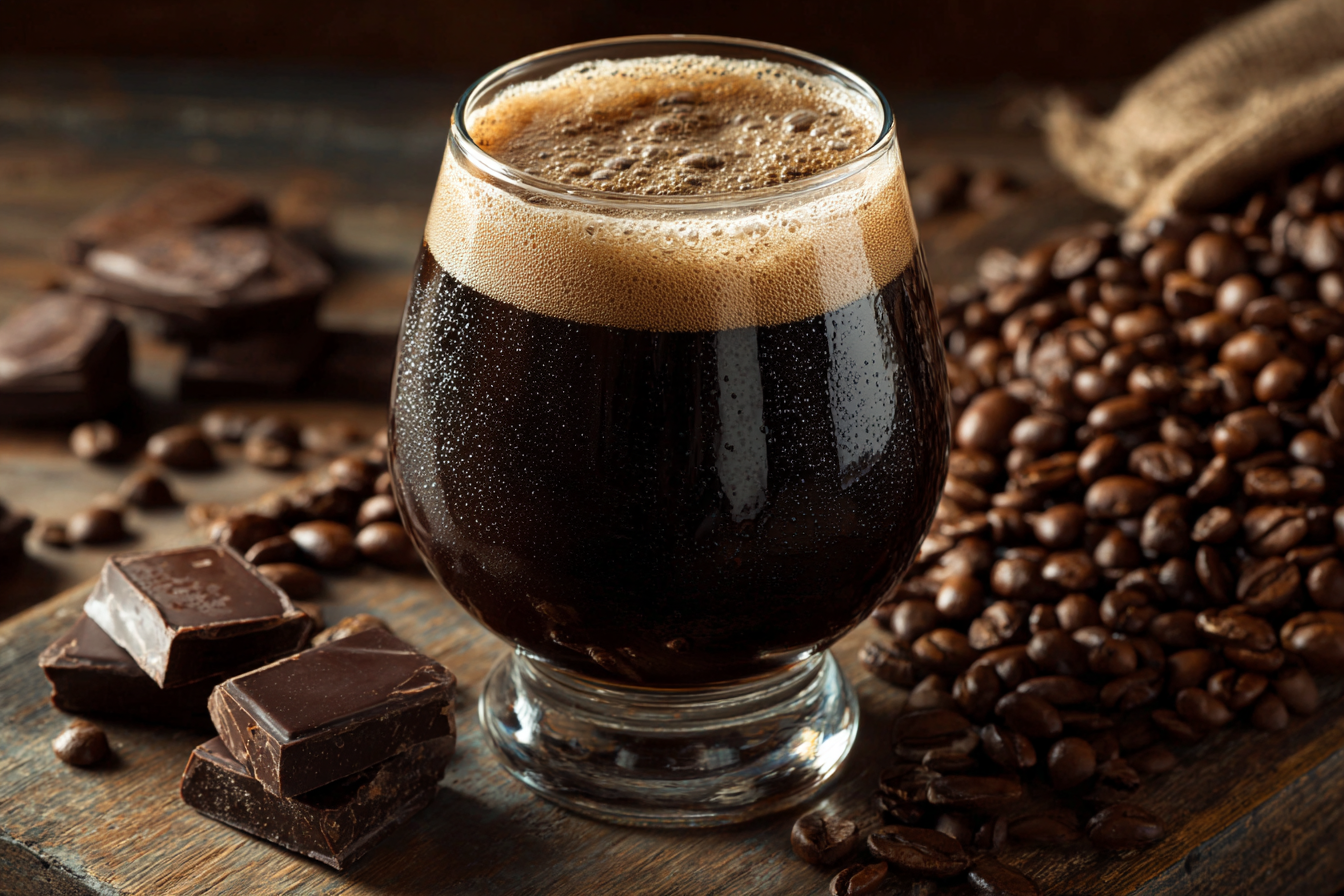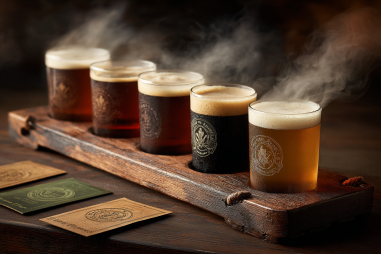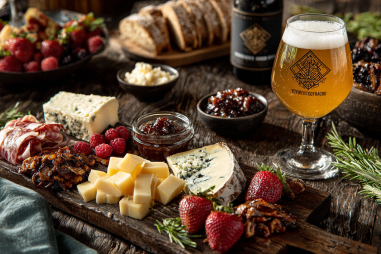Foreign Export Stout is a beer style that has captivated the palates of stout enthusiasts around the world. Known for its bold character and deep complexity, this stout offers a flavor profile that can vary greatly but always delivers a rich and robust drinking experience. Whether you are new to stouts or a seasoned beer lover, understanding the flavors that define Foreign Export Stout will enhance your appreciation with every sip. Let’s dive deep into the unique tastes and aromas that make this style so memorable.
Introduction to Foreign Export Stout Flavors
Originating from strong export stouts brewed for the British colonies and foreign markets, Foreign Export Stout is designed to be a bit stronger and more robust than standard stouts. This style often carries a higher alcohol content and a thicker, fuller body, crafted to withstand long shipping journeys. The flavor profile is typically rich and layered, featuring a harmonious blend of roasted, sweet, bitter, and sometimes slightly fruity notes. These flavors come together to create a stout that is enjoyable on its own but also versatile when paired with the right foods.
Key Flavor Notes: Roasted Malt, Coffee, Chocolate, Caramel
At the heart of Foreign Export Stout’s flavor profile is the roasted malt character. This malt backbone gives the beer its signature dark color and foundational flavor.
- Roasted Malt: The roasted barley and malts impart aromas and flavors that remind drinkers of toasted bread, dark roast coffee, or even charred wood. This roasted note is often the first thing you notice when tasting a Foreign Export Stout.
- Coffee: Many Foreign Export Stouts present a pronounced coffee character, ranging from espresso-like bitterness to smoother, milk coffee tones. This flavor arises naturally from dark-roasted malts but can be amplified by brewing techniques or specific malt selections.
- Chocolate: The chocolate notes in this stout style are typically bittersweet or dark chocolate, adding a richness and depth that balances the roastiness. This quality lends a dessert-like smoothness without overwhelming sweetness.
- Caramel: Alongside the darker malt qualities, caramel flavors provide a sweet, syrupy counterpoint. These notes emerge from the malt kilning process and add complexity, giving the beer a subtle warmth and lingering finish.
The Role of Hops and Bitterness
While malt takes center stage in Foreign Export Stout, hops play an important supporting role. The hop bitterness in this style is typically moderate but well-balanced, providing a countermeasure to the sweet malt flavors. The hop varieties used often contribute earthy, herbal, or slightly floral notes rather than aggressive pine or citrus flavors, allowing the malt profile to remain the focus.
The bitterness adds structure and prevents the stout from feeling cloying, especially important given its typically higher residual sugars and fuller body. The interplay between malt sweetness and hop bitterness creates an overall harmony that is both complex and drinkable.
Mouthfeel and Alcohol Warmth
Another defining characteristic of Foreign Export Stout is its mouthfeel. These stouts usually have a medium to full body, making the beer feel smooth and substantial on the palate. The carbonation level tends to be moderate, which helps lift the flavors without compromising the silky texture.
Given the higher alcohol content, generally ranging from 6.5% to 8% or more, there is often a mild warming sensation that accompanies the finish. This warmth is a welcome feature for many drinkers, especially in cooler months, adding to the beer’s comforting and satisfying nature.
How Brewing Techniques Influence Flavor
The complexity of Foreign Export Stout’s flavor profile is heavily influenced by the brewing techniques and ingredients used. Several factors come into play:
- Malt Bill: Brewers often incorporate a blend of pale, roasted, chocolate, and caramel malts to build layered malt complexity.
- Mashing Temperature: A slightly higher mashing temperature extracts more dextrins, enhancing the sweetness and body of the beer.
- Roasting Level: The degree of roasting impacts how bitter or smooth the roasted flavors are, with some brewers opting for a more balanced roast to produce subtle coffee notes instead of harsh bitterness.
- Fermentation: Some brewers select specific yeast strains that complement malt flavors without introducing excessive fruitiness or esters, keeping the beer profile focused.
- Aging: Extended conditioning or barrel-aging can introduce additional layers such as vanilla, oak, or smokiness, intensifying the overall flavor.
Comparing Foreign Export Stout with Other Stout Variations
Foreign Export Stout stands apart from other stout styles, yet comparing them can highlight its unique features:
- Dry Stout: Often lighter in body and lower in alcohol, dry stouts like Guinness emphasize a crisp dryness and prominent roasted bitterness, whereas Foreign Export Stouts are richer, fuller, and sweeter.
- Imperial Stout: Imperial stouts are generally stronger, bolder, and more intensely flavored than Foreign Export Stouts, frequently with more pronounced alcohol warmth and complex aging characteristics.
- Milk Stout: Milk stouts use lactose to add sweetness and body, creating a smooth and creamy beer that contrasts with the more malt-forward, roasted bitterness of Foreign Export Stout.
- Oatmeal Stout: Featuring oats for a silky texture and mild sweetness, oatmeal stouts tend to be softer and less intense in roast compared to the often bolder Foreign Export Stout.
Food Pairing Suggestions Based on Flavor Profile
The rich and multi-dimensional flavor of Foreign Export Stout lends itself well to a variety of food pairings. Here are some delicious options that complement and enhance the stout’s character:
- Roasted Meats: Think beef brisket, lamb, or pork shoulder. The roasted malt flavors match wonderfully with charred, caramelized, and smoky meat dishes.
- Chocolate Desserts: Dark chocolate cake, brownies, or even a chocolate mousse bring out the chocolate and caramel tones in the beer.
- Strong Cheeses: Aged cheeses like sharp cheddar, blue cheese, or gouda stand up to the stout’s intensity and add a creamy complexity.
- Spiced or Barbecue Cuisine: Spicy ribs or chili work well with the beer’s robust body and balance of bitterness and sweetness.
- Nuts and Roasted Vegetables: The earthy, roasted quality of nuts and root veggies echoes the stout’s malt profile for a harmonious pairing.
Experimenting with pairings can reveal new flavor dimensions in the beer and elevate your overall tasting experience.
Appreciating the Depth of Foreign Export Stout Taste
Foreign Export Stout is a complex brew that invites exploration and enjoyment. Its bold roasted malt base, layered with coffee, chocolate, and caramel notes, delivers a satisfying richness that appeals to both casual and serious beer drinkers. The balanced bitterness and moderate hop presence create a well-structured beer that avoids sweetness overload while maintaining depth.
The mouthfeel and alcohol warmth add to the beer’s comforting qualities, making it ideal for savoring slowly on a cool evening. When paired with the right foods, the stout’s aromas and flavors amplify in delightful ways, making every sip a memorable experience.
Understanding and recognizing the nuances of Foreign Export Stout’s flavor profile will deepen your appreciation for this historic and enduring beer style — one that continues to be celebrated by stout lovers worldwide.







